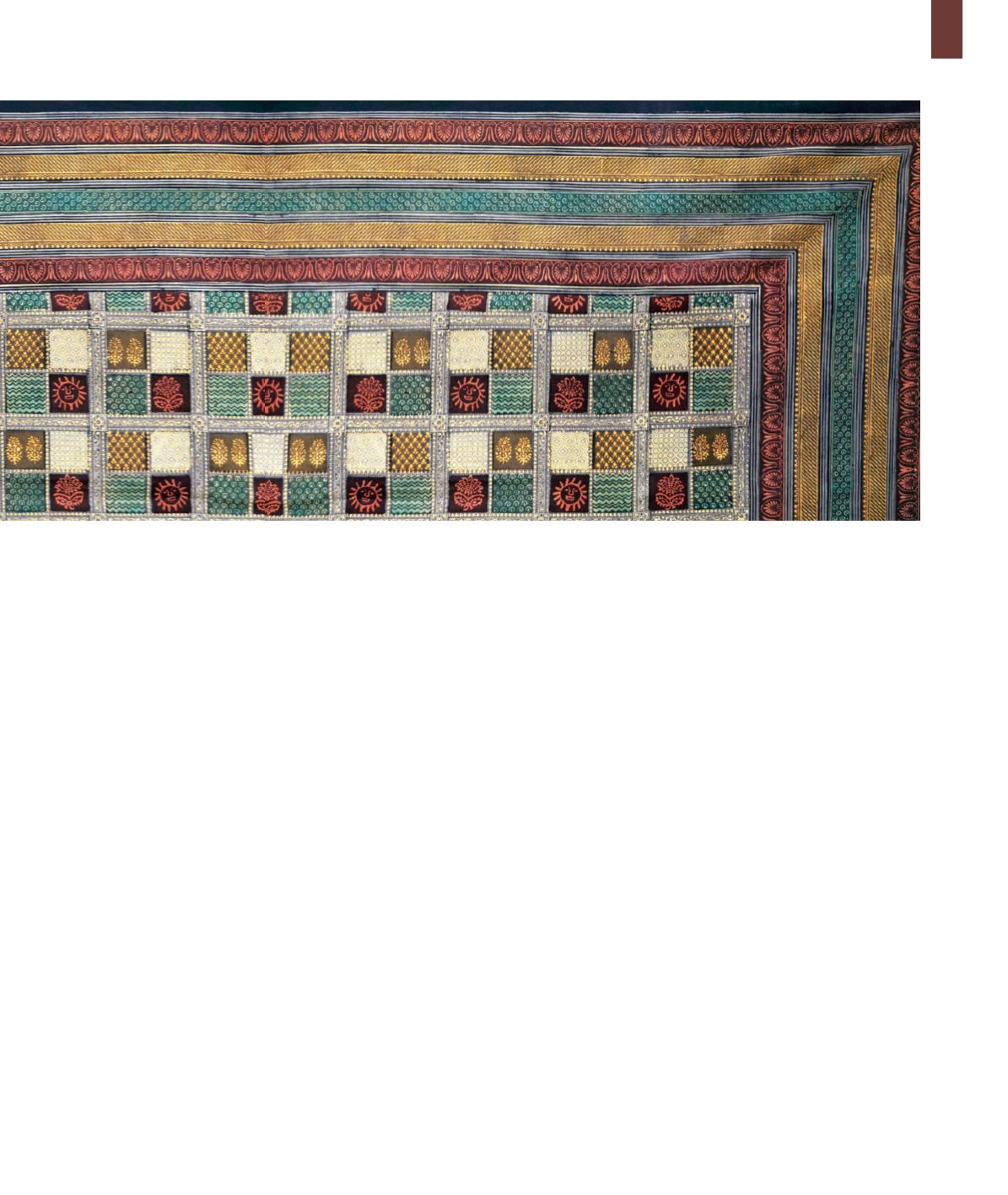
43
from madder root and deep red from alum,
black from iron and jaggery, and yellow from
minerals. Motifs and patterns are created
on garments and textiles using these natural
colours.
Treasuring Traditions
For any motif, the blocks are generally required
in a set of three comprising of
gad
(for making
the background),
rekh
(for outlining the
motif) and
datta
(for filling motifs). The
gad
or
rekh
block may be used independently or
in combination with each other for printing.
The
rekh
and
datta
blocks are carved in relief.
The impression of
rekh
block comes within
the outline printed with
gad
of the same motif.
The
datta
block is carved in bold relief, so that
the
dabu
or clay resist area can be printed in a
manner that the area can be protected from the
action of dyeing afterwards to get the Dabu
resist effect.
The different motifs that have been featured on
Bagru textiles are derived from flora and fauna
around the town especially small flowering
plants called
butis
. In traditional expression,
the motifs were mostly floral and vegetative,
and arranged in a linear pattern and were
comparatively smaller in size than the motifs
seen today. The motifs are known by their local
names such as
bel patra ki buti, patti ki buti, chattri
ki butti, kalangi ki buti, dhania buti, kel ki buti,
Mughal buti, makhi ki buti, turahi ki buti, chaakri ki
buti, patashi ki buti, bankdi ki buti, pankhi ki buti,
nargis ki buti, titali ki buti
and
gundi ki buti
. Most of
these stem from flowers, leaves, plants or trees.
Motifs and patterns are created on cloth by a
labour-intensive process involving dyeing and
printing, and traditionally took place through the
cooperation and coordination of three different
communities amongst whom the work was
divided – the washer men
(dhobis)
, the printers
(chhipas)
and dyers
(rangrez)
. The washer men
carried the cut pieces from the house of printers.
They carried out the process of de-sizing and
treating the cloth with
harda
that is called
pila
karna,
literally making it yellow. The dried
harda
cloth was then delivered to the printers to do
the printing. After printing the cloth would be
given to the dyers who would dye the cloth.
The washer men then processed the fabric in
the bleaching agents to get the final fabric. This
division of labour is not prevalent in the town
in the present day as now depending on the size
of the family the members distribute the work
between themselves.


